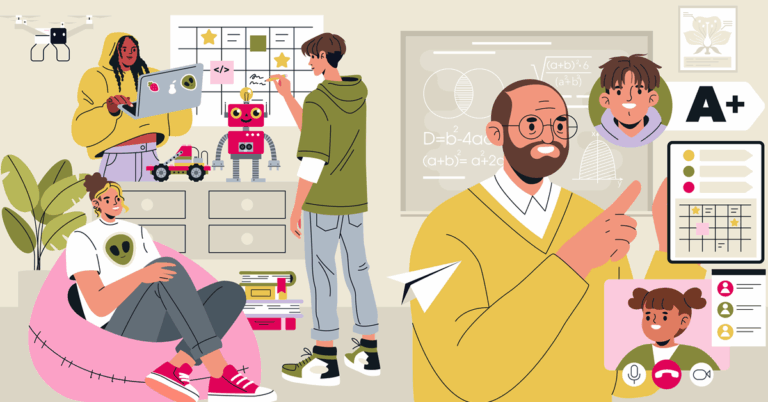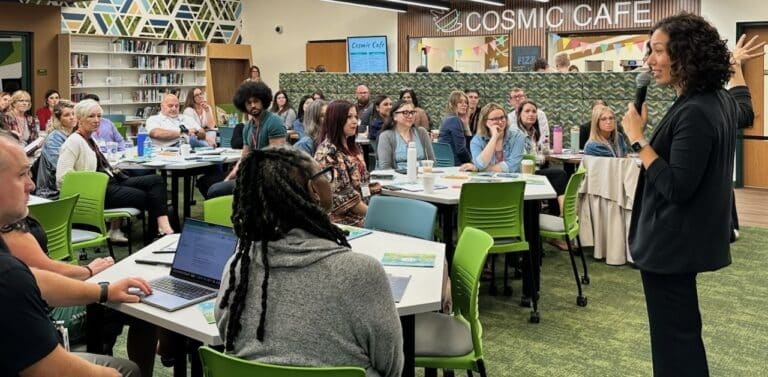Daniel Pink, a leading author in the area of changing the world of work, introduced three primary concepts as the basis for motivation:
Autonomy
Mastery
Purpose
When people are engaged in meaningful work, the motivation for them to do better is not for pay; they are motivated by autonomy, mastery and purpose. Pink’s book Drive is focused on the adult work place, but motivation has no age limit. What do these concepts look like when we are thinking about K-12 instructional practices?
A critical question that must be asked before considering any new resources should be “Is this thinking aligned with personalized, competency-based learning?” My answer: you bet it is! For more information regarding the shifts teachers and leaders need to make in preparation for personalized, competency-based learning, consider reading A Handbook for Personalized Competency-Based Education.
What does it take to provide learners with ongoing opportunities to engage learning using the concepts of autonomy, mastery and purpose? How will this help them be college and career ready?
Autonomy – Provide learners with frequent and authentic opportunities to make choices and engage in critical thinking / design.
When designing learning opportunities provide several choices for how learners may demonstrate understanding. One of my favorite middle school Language Arts teachers did just this when her students read The Outsiders. Learners chose different avenues through which they demonstrated three distinct higher order thinking skills.
Adopt a collaboration or design thinking process and use it for problem solving/finding inside the classroom and beyond. KnowledgeWorks uses Stanford’s d.school Design Thinking Process with our sites. Our coaches facilitate Design Teams and school staff in using this process to build relevant learning opportunities rooted in empathy. Learners are taught to use this process to find and solve problems both inside the school building and throughout their community.

Mastery – People generally want to get better at their work because it makes them feel good. Not only is a job well done more satisfying, but in today’s standards based world mastery of learning is essential.
Passing a course with a “D” because the learner brought in that extra tissue box or 10 canned goods does not help children succeed. Children must be able to demonstrate mastery of knowledge and essential skills through a variety of assessments – both paper/ pencil and performance-based.
Rethink assessment and grading systems. Collaborate as a staff to identify what mastery means in your school. Identify the competencies which must be mastered in order to successfully progress to the next level. Utilize a variety of methods and strategies to ensure assessments are relevant to each child. Develop opportunities for learners to demonstrate their understanding in multiple ways. Such a shift will require teachers and learners to work together to continue the learning experiences until the competency is mastered. Not every learner will progress at the same pace and that is OK! Does this mean that learners will not be prepared for college? No! Mastery provides students additional supports and uses multiple teaching strategies to ensure children know, understand and demonstrate their learning before progressing.
Understand the difference between standards-based grading versus mastery learning. Many schools use standards-based grade cards very effectively to tell the story of a child’s progress. However, this isn’t mastery learning unless the teacher and the learner are working together to ensure a competency is met before progressing. My own children have had standards-based grade cards which showed they did not meet a standard and yet no intervention was provided. Instead, the teacher moved on because it was time to study the next topic. This results in gaps in learning.
This sounds great, but how do I begin mastery learning?
ASCD published a good article called Lessons of Mastery Learning by Thomas R. Guskey. This provides an overview and lessons learned. It’s a starting point for teachers, leaders and schools.
Purpose – Why do I have to do this? When am I going ever going to use this? These are questions kids ask teachers every day.
Oftentimes the answer they receive is – “because it’s important”. However, oftentimes teachers don’t help kids understand why it is important. This is one of the greatest errors we make as educators. Kids are naturally curious. If we link learning to their quality world, they get really excited about the work, want to do it and want to do it well.
Understand the difference between inquiry (problem-based) learning vs. project-based learning. Project-based learning is a good way to help learners understand how something works or to bring a subject to life. However, it doesn’t necessarily help them make real world connections because the projects are often artificial. Inquiry learning is much more authentic because learner are mastering competencies by solving a real-world problem in their community. This shift can be challenging for teachers so KnowledgeWorks coaches use Stanford’s design thinking process as well as the Question Formulation Technique (QFT) from the Right Question Institute to create authentic learning opportunities for/with their learners.
Work with real life examples. Not every competency can be taught through an in-depth inquiry-based project. However, teachers can link learning to what matters or makes sense to kids. Link literature or social studies to more modern issues around relationships, wars and political intrigue in the news today. Connect math lessons to the ways professionals use this skill in their daily work. Help learners understand how science concepts impact the world around them.






